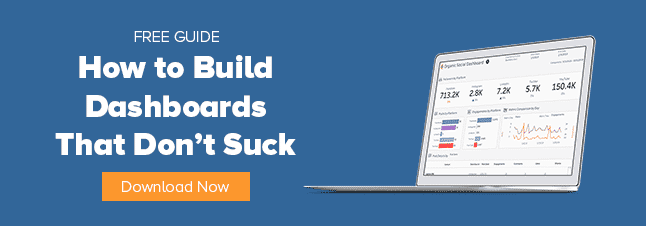
How should marketers measure lead conversions — by looking at view-through or click-through? Goal conversions? How many leads end up in your CRM?
I get this question a lot, and my answer is always: Use all of those methods. The key is to use each one in the appropriate context. Otherwise, you could create an incorrect picture of performance and, worse, alienate your stakeholders.
As a profession, we marketers tend to make three common mistakes when we talk about lead conversions.
- We start the conversation too small.
- We use metrics that aren’t really understood.
- We talk about things that don’t really mean anything from a revenue perspective, which is what your boss or clients really care about.
I’m going to show you how to avoid those pitfalls by employing the right lead conversion KPI at the right time.

Click-Through vs. View-Through Lead Conversions
Let’s start on the media side, where there are two primary types of conversion types: view-through and click-through.
Click-through is exactly what it sounds like. I see an ad, I click on it, I convert on the advertiser’s site.
View-through is what happens when I see an ad and don’t actually click on it. But a cookie is stored in my browser, so when I finally go to the site later and convert, that original ad gets the credit.
BLOG: Want to boost lead conversion rates? Look between the boxes.
There’s a potential for conflict, though. Let’s say I see an ad on Facebook and don’t click on it, but Facebook does start tracking me. Two days later, I search for the same product on Google, click on the ad that pops up, and then make a purchase.
Facebook got a view-through. Google got a click-through. Two conversions, but only one purchase. If you’re not careful in your reporting, you could end up double-counting conversions and creating a false view of your performance.
Which one is better, view-through or click-through? They both really play the same role, in my mind. They’re both designed to help marketers optimize their creative and messaging.
But they’re not as helpful for measuring lead generation. Don’t talk about click-through and view-through the next time you’re in a meeting with your sales team or your C-suite unless you want that conference room to become a very uncomfortable place to be. Your audience won’t care because they’re focused on how many leads were created, not exactly how they were generated.
And because of the risk of double-counting, view-through and click-through aren’t a great way to measure the number of leads.
Why Goal Conversions Are Awesome for Measuring Lead Conversions
For most marketers, it’s going to be more effective to measure leads at the campaign level, and goal conversions are the best KPI for that job. They illustrate how an entire campaign — a strategic effort organized around a specific purpose, employing one or many marketing tactics — impacts conversions.
And for a lot of marketers, goal conversions are the closest thing to measuring leads in a CRM, which (spoiler) is what the C-suite and sales team do care about.
Google Analytics is what we’ve always used as the source of truth for conversions. Some media teams dislike this because they can’t see what specific ad buys led someone to their sites.
As marketers, we really need to get over our desire to see which specific ad or keyword leads all the way down to a specific customer. There are some exceptions, but in a lot of cases, it may not matter.
If you’re a marketer who is responsible for lead gen, you have one job: create demand. That’s it, that’s your job. How many leads, sales and customers did you generate?
A lot of us like to start the conversation further up the funnel, talking about view-throughs and click-throughs, maybe because we have a little more control there. Business owners don’t care about that. They care about what’s in their CRM, which is their source of truth.
If you can access the CRM as part of your reporting, that’s great — we actually have a lead generation solution that can assist you with that. And it can be useful to track which landing pages produced which leads.
But if you don’t have that, and a lot of marketers simply can’t get CRM data, you can still use goal conversions to count leads and optimize your campaigns. You can use view-through and click-through to optimize your spend and creative.
Start at the end of the funnel, and work backward. That’s the story we teach and preach at Alight Analytics. When you flip that discussion, you can have more meaningful conversations about your marketing investment and how it influences lead generation and, ultimately, sales and revenue.
Get the Insight You Need to Maximize ROI and Drive Growth
Alight’s Lead Generation Analytics solution combines an award-winning platform with analytics experts, enabling you to generate powerful insights and reporting for your entire funnel. Schedule a free solution consultation with our team!